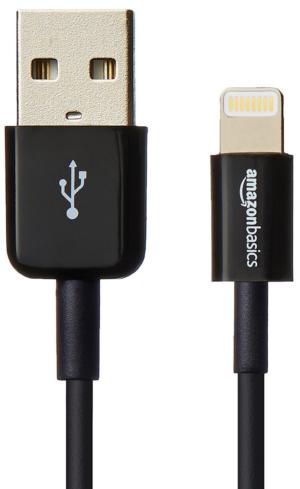Cable Basics
Basics of Wires and Cables. 1. Www.tempsens.com. www.tempsens.com 1. Components of Cable. Conductors I.
Type of conductors: a) Copper conductors. B) Thermocouple conductors. C) Other conductors. Insulation and types. Inner Sheath. Mechanical Protection. Outer Sheath.
Jul 4, 2017 - Telecharger 24 Heures Chrono Saison 2 Vf Torrent. July 4, 2017. Scan Tool For Ford Focus. July 1, 2017. Download Detective Conan Movie. Brothers hindi movie torrent download.
Cables for Temperature Sensor and Instrumentation: I. Thermocouple Cable. Instrumentation Signal Cable.
Cables for High Temperature and others: I. Control and power Cable. Heat Resistance Cable. Lead wire And Other Special Cables. www.tempsens.com Outer Sheath Armouring Inner Sheath Screening Conductor Insulation Conductor.
Cable Basic Service
The center component of any cable is the conductor which carry the signal or power through that cable. For signal & power transmission copper is most commonly used conductor. Www.tempsens.com CONDUCTORS. Copper conductors Annealed Bare Copper(ABC) Tinned Plated Copper(TPC) Nickel Plated Copper(NPC) Silver Plated Copper(SPC) www.tempsens.com Thermocouple conductors Thermocouple grade conductors(TC) Extension grade conductors(EX) Compensating grade conductors ( C) Other conductors Pure Nickel Conducators (Ni) etc. Thermocouple conductors Thermocouple grade conductors(TC) Extension grade conductors(EX) Compensating grade conductors ( C) Other conductors Pure Nickel Conducators (Ni) etc. Www.tempsens.com. Insulation refers to the layer of plastic, polymer or high temperature compound that is applied directly over the conductor.


There are variety of insulation along with wide temperature range from -260°C to 1200°C. Www.tempsens.com. Screening is applied for magnetic and electrical protection. There are generally two types of Screening available: Aluminum foil Type: - Screening is done by helically applied aluminum foil with 100% coverage. Mesh Braided Type:-Screening is done by Copper wire (Bare Copper, Tinned Copper, Nickel Plated Copper, Silver Plated Copper). It is in mesh braided form with 70% to 95% Coverage area. Www.tempsens.com.
PVC Silicon Teflon Polyamide Fiber Glass Alumina fiber etc. (as listed in insulation) www.tempsens.com. G.I. Armoring (Round wire / Flat strip as per IS3975:99) SS Braiding (More Flexible) www.tempsens.com. PVC Silicon Teflon Polyamide Fiber Glass Alumina fiber etc.
(as listed in insulation). Www.tempsens.com. www.tempsens.com.
THERMOCOUPLE CABLE Thermocouples cables are used to measure the temperature directly. Extension & Compensating wires are only use to extend a thermocouple signal from a sensor to instrument for readings. Www.tempsens.com. INSTRUMENTATION SIGNAL CABLE Instrumentation signal cables minimise noise and signal interference, delivering clean signals in harsh environments and general manufacturing operations. These cables are designed for use in communication and instrumentation. Www.tempsens.com. CONTROL & POWER CABLE HEAT RESISTANCE CABLE Control & Power cable up to 1.1 KV voltage grade.
Heat resistance cables with maximum 800°C temperature withstanding www.tempsens.com. LEAD WIRE OTHER SPECIAL CABLE Lead wire or Hook up wires handle temperature -260 °C to extreme high temperature 1200 °C with insulation PVC, PTFE, FEP, PEEK, Silicon, Glass Fiber, Ceramic Fiber etc. Network Cables Co-axial Cable Lance Cable Load Cell Cable Composite VGA Cable SLEEVES Variety of sleeves suitable for wide temperature range with various insulation such as PTFE, FEP, Silicon, Fiber Glass, Stainless Steel wire, Polyamide & PVC.
Www.tempsens.com. Tempsens Instruments (I) Pvt.
B-188 A, Road No. 5, MIA, Madri Udaipur - 313 003 (Rajasthan) INDIA Phone: +91-2 Fax: +91-2 E-mail: info@tempsens.com Website: www.tempsens.com Temperature Sensing, Heating & Cables.
Instruments such as the Analog Arts ST985 (www.analogarts.com), based on the TDR and wave transmission concept, characterize the length, impedance, and other characteristics of a cable. When a signal travels through a cable, it is undisturbed until it encounters an impedance change, and if it encounters an open circuit, all of the wave reflects back to the source.
The characteristic impedance of the cable and the load impedance, determine what happens to the signal at the load. A higher load impedance reflects a part of the signal back to the source.
There is no reflection when the load impedance is smaller than the impedance of the cable. However, smaller loads cause signal loss. An equal load impedance prevents signal reflection while delivering maximum amount of power to the load. An impedance mismatch can happen whenever the signal medium changes. For example, when the source is connected to the cable or at the load.
These mismatches cause reflection and signal loss. In general, the source output impedance, cable characteristic impedance, and load impedance must be made equal for optimal performance.

Impedance matching maximizes the power transfer to the load and eliminates signal reflection. A perfect impedance matching transfers half of the source power to the load. When the signal wavelength becomes a significant portion of the cable length, without a proper termination, reflection distorts the signal. The reflected wave changes the amplitude of the signal throughout the cable.
Booster Cable Basics
At the source, it acts like a load, which if not properly addressed, can damage the signal generator. At certain frequencies, the reflected wave interferes constructively with the signal. The resultant signal is referred to as a standing wave. A TDR consists of a pulse generator, a monitoring instrument device, and a DSP. Generally, in these instruments, the generator outputs a fast transition pulse. This pulse travels to the end of the cable and reflects back.
Coax Cable Basics
But first it is divided by the voltage divider formed due to the source resistance and the cable impedance. The division factor is then calculated based on which the impedance of the cable is found. The divided signal travels through the cable at a fraction of the speed of light in vacuum.
This fraction is referred to as the velocity factor of the cable. For a coax it is about point 67. The time it takes for the signal to reach the end of the cable and reflect to the source, is used to calculate the length of the cable. Impedance matching maximizes the power transfer to the load and prevents reflection. Damaging a cable, by twisting, bending, or kinking, or placing improper signal connectors in the signal path cause an impedance mismatch resulting in reflection, and consequently less than ideal signal handling.